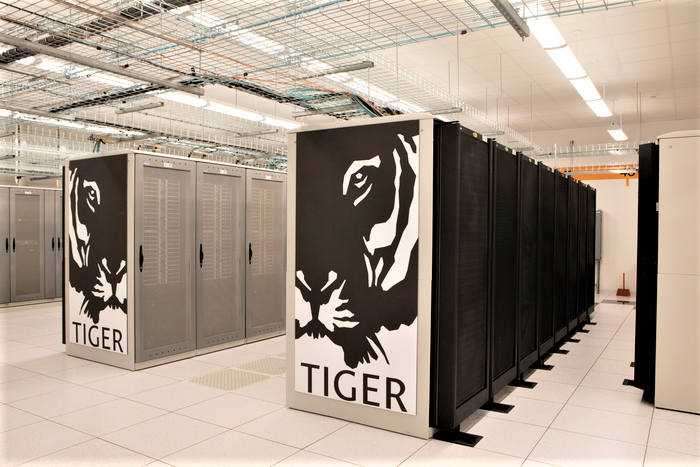High-performance computing creates hydrogen chip

|
Getting your Trinity Audio player ready...
|
Renewables are providing an increasing share of the world’s energy needs. Solar is on track to become the world’s largest source of power capacity within the next five years, according to International Energy Agency figures. And while there is much to celebrate, kinks remain in the global transition to green energy. But clever thinking – such as a high-performance computing designed hydrogen chip, devised by researchers in the US – could eliminate some of these technology roadblocks.
Popular clean energy sources such as wind and solar cannot be relied upon to give a continuous supply of electricity. Also, during peak generation times, the power delivered by arrays of turbines and photovoltaic panels may exceed demand. Setups require some kind of storage mechanism to get around mismatches in supply and demand, and to smooth the input of green energy to the power grid.
Storage solutions
Batteries are one option. But there are supply constraints on some of the key materials required (such as lithium, hi-grade nickel, and cobalt) to build them. And at busy times, even a large array of batteries wouldn’t keep cities powered for long. Pumped hydro energy storage (PHES) is one way of solving this problem – using excess green electricity to fill dams at high altitudes with water.
When the sun stops shining, or the wind stops blowing, valves can be opened to allow water that’s been raised into a dam to run down and drive electricity-generating turbines. PHES facilities excel at long-term energy storage. And it may come as a surprise to learn that 96% of global storage power capacity is provided through hydropower – dwarfing the contribution made by batteries.
Countries are linking their energy grids – for example, the UK has electricity interconnectors with several European countries, and benefits from Norwegian PHES thanks to a 724 km undersea electricity cable. Such projects are major engineering undertakings – from application submission to commissioning, the UK-Norway link took eight years to realize and cost EURO 1.6 billion.
Engineers are considering a range of options, including chemical approaches to green energy storage, which brings us to the clever hydrogen chip mentioned at the beginning of the article. Hydrogen has been ‘the fuel of the future’ for more than a century. But today, there’s a sense of urgency in bringing clean-burning hydrogen to market to meet net-zero commitments.
Sunlight into gas
Much of the talk is on the topic of using renewable power to create hydrogen from water though electrolysis – another way of capitalizing on excess power. Countries with strong solar prospects could store their sunshine in the form of hydrogen and ship it to customers living in gloomier locations. However, hydrogen is a tricky gas to store – particularly for long periods.
Compressing hydrogen gas is expensive, and small hydrogen atoms can make their way into solid metals, causing materials to crack. A more appealing route is to use ammonia (a molecule composed of nitrogen and hydrogen) as an easier to store hydrogen carrier. For decades, ammonia has been synthesized using the Haber-Bosch process, which requires lots of heat, pressure, and the burning of fossil fuels – a considerable headache when it comes to meeting net-zero commitments.
But ammonia can be made from renewable sources, as recent efforts have demonstrated. Siemens opened a pilot plant in Oxfordshire, UK, to explore the industrial feasibility of so-called green ammonia. But one of the missing pieces of the puzzle has been finding an affordable way of releasing (or splitting) hydrogen out of ammonia when it’s time to use the gas.
Hydrogen chip design
Scientists have shown that using a ruthenium catalyst can help to lower reaction temperatures. But ruthenium – a rare transition metal in the platinum group of the periodic table – is not cheap. Searching for an alternative approach, the US team behind the hydrogen chip realized that nanotechnology might provide the answer.
Their design, which was refined using high-performance computing resources dubbed TIGRESS (the Terascale Infrastructure for Groundbreaking Research in Engineering and Science Center), can extract hydrogen from ammonia using only light from energy-efficient LEDs. What’s more, the device operates at room temperature with no additional heating thanks to the plasmonic properties of tiny copper structures that behave as miniature antennas.
“We hear a lot about hydrogen being the ultimate clean fuel, if only it was less expensive and easy to store and retrieve for use,” said Naomi Halas, one of the researchers behind the LED-based design. “This result demonstrates that we are moving rapidly towards that goal, with a new, streamlined way to release hydrogen on-demand from a practical hydrogen storage medium using earth-abundant materials and the technological breakthrough of solid-state lighting.”










